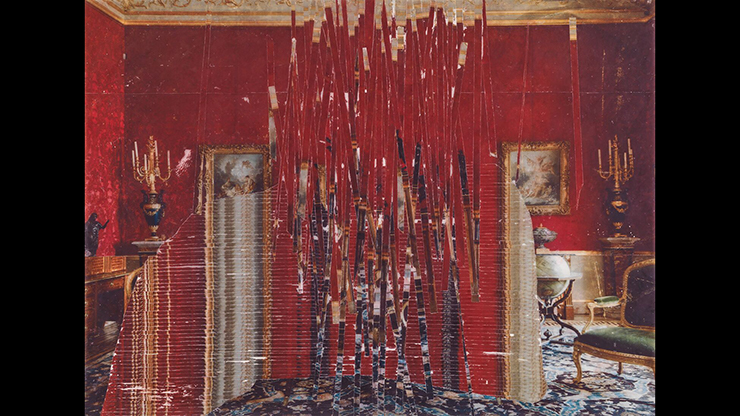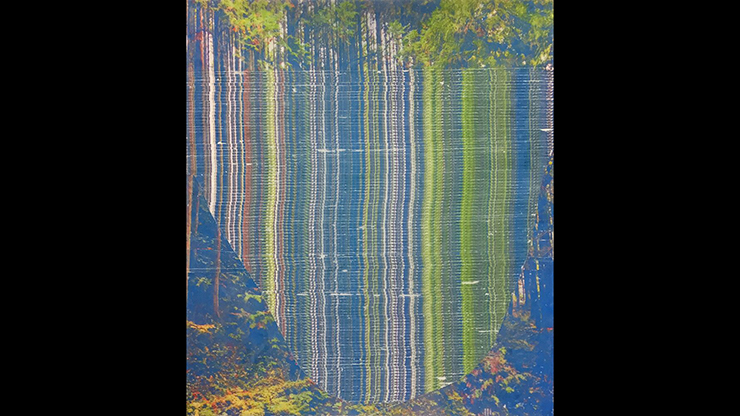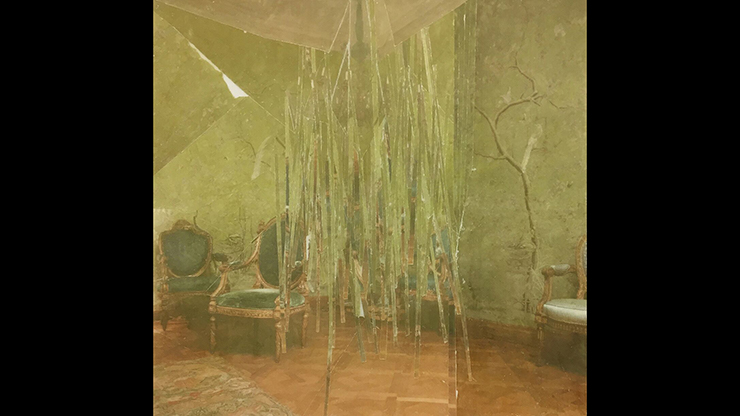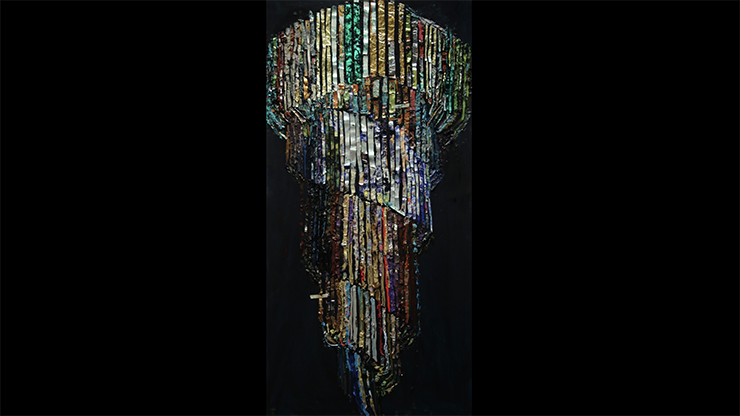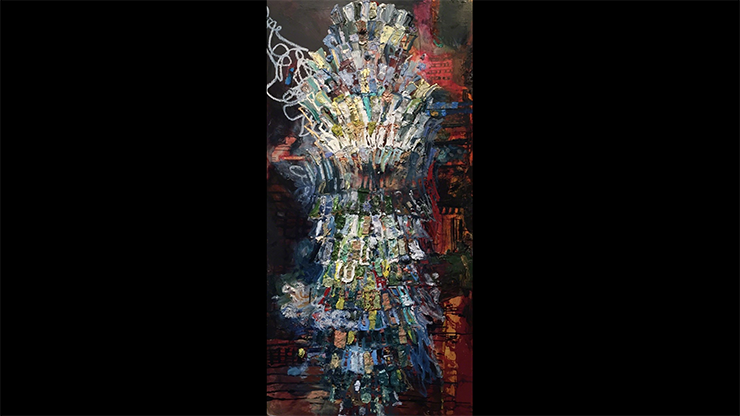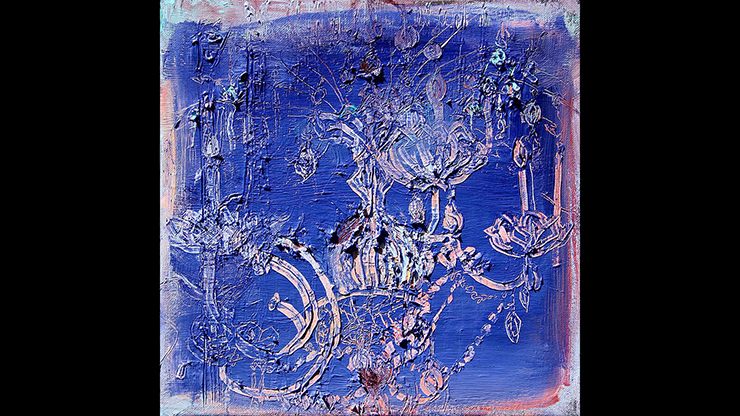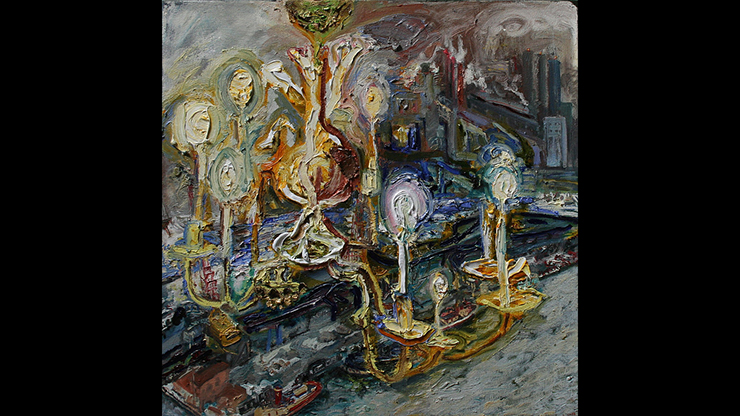Matthew Conradt and Lizbeth Mitty: Valley of Ashes
MATTHEW CONRADT AND LIZBETH MITTY: VALLEY OF ASHES
Oct. 24 – Nov. 27, 2018
Artist’s Talk: Wed. Oct. 24, 5-6 pm
Opening Reception: Wed. Oct. 24, 6-8 pm
“This is a valley of ashes – a fantastic farm where ashes grow like wheat into ridges and hills and grotesque gardens; where ashes take the forms of houses and chimneys and rising smoke and, finally, with a transcendent effort, of ash-Grey men, who move dimly and already crumbling through the powdery air. Occasionally a line of Grey cars crawls along an invisible track, gives out a ghastly creak, and comes to rest, and immediately the ash-Grey men swarm up with leaden spades and stir up an impenetrable cloud, which screens their obscure operations from your sight.”
– F. Scott Fitzgerald, The Great Gatsby
The Mueller Gallery at Caldwell University is pleased to present Valley of Ashes, a two-person exhibition featuring the work of Matthew Conradt and Lizbeth Mitty. Conrad and Mitty create images that embody decay, entropy, and dislocation. While their creations are not overtly political, the work can serve as a metaphor for the most pressing and profound issues faced by
our contemporary culture – issues of class and the distribution of wealth, the degradation of natural resources and wildlife, and the threat of global warming. The work calls into question our values as individuals and as a society.
This is poetic, soulful work – arrived at through very different means. Lizbeth Mitty creates painterly encrusted surfaces using the motif of antique chandeliers, which serve as mordant symbols of better times. Matthew Conradt conjures disorienting photo-transfer collages that depict images of deserted and decaying interior spaces and ghost-like human forms.
VALLEY OF ASHES IMAGE LIST
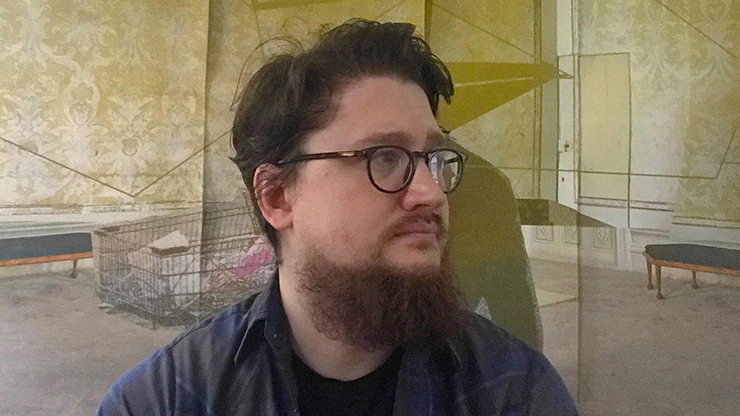
Matthew Conradt
I create large-scale mixed media collages using found images from print media and the internet, that are then photo-transferred onto Mylar. Through this process I alter the images, erasing parts, interrupting the picture plane or obliterating the image entirely. I am interested in the underlying structure in the images and what they say about class, loss, and American historical memory. I am particularly interested in images of labor, production, and destruction. Growing up in the mid-western rust belt, I search for images that are both familiar and alien to my experience. Decadent interiors, wood paneling from trailer homes, and wide-open, desolate landscapes become portents and signifiers of the substantial socio-economic and cultural differences that currently exist in the United States. I want to show the disparities between the realities of the country and the perceptions we show ourselves. I want to make both inviting and unnerving vignettes that call to mind the artifice of the narratives we consume daily.
Bio: Matthew Conradt is a Brooklyn-based artist that has been exhibited widely in the US and abroad. In 2008 Conradt was an Artist-In-Residence at the Cooper Union School of Art, he was a part of the Artist-In-The-Marketplace Biennial at the Bronx Museum of Art in 2012 and was a Lower Manhattan Cultural Council Workspace Artist-In-Residence in 2016/2017. His work was also featured as a solo presentation at Volta Art Fair with Muriel Guepin gallery in 2014. Matthew Conradt received his Masters in Fine Art from Pratt Institute in 2008 and has been featured in numerous publications and art blogs such as the New York Times, SHK Magazine, and Little Paper Planes.
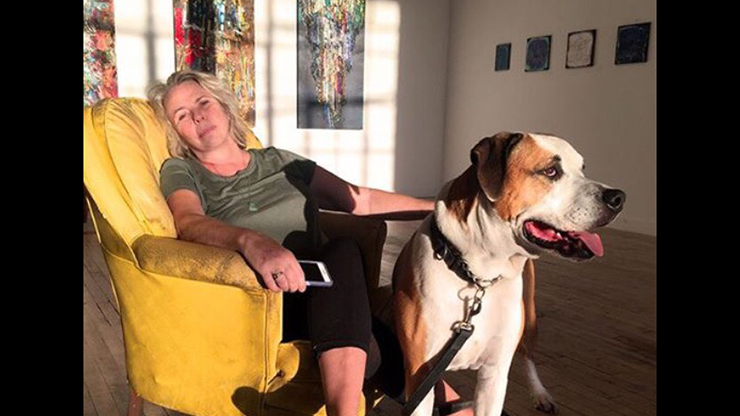
Lizbeth Mitty
Born in Queens, NY to a family of artists, inventors, and actors, I grew up painting and writing. My work has been exhibited in galleries and museums in both the United States and abroad and is held in public and private collections including The Metropolitan Museum of Art, The New York State Museum, The Orlando Museum of Art, The Zimmerli Archive, The U.S. State Department, and Trierenberg Holding AG (Austria). My studio is located in Brooklyn, NY. My body of work — described by New York Times critic Ken Johnson as a combination of “painterly verve and hellish beauty” — has long been concerned with examining and amplifying the intrinsic abstract beauty of deteriorating or overlooked corners of urban architecture and interiors. In 2015, one object, the chandelier, rose up from detritus to dominate and finally stand alone in my present body of work. Spectacular, illuminated, and intricate, the chandelier is evocative of grandeur. For much of my career, scrap yards and other sites of urban devastation fascinated me as locations of organized chaos, formally beautiful, yet apocalyptic and terrifying. Similarly, the chandeliers speak of decadence, sadness, elegance, death, and hope. The chandeliers have led me back to architecture, but the subjects, carousels, and gazebos, are in the round. This is an unintended preoccupation with the cyclical nature and mutability of things in times of excess. Many of these paintings are shades of white on shades of black, taking on an ambiance of ghostly languor. Others are colorful and onboard, incorporating the by-products of studio life such as paint tubes and metal cans. The juxtapositions of conflicting images, such as man-made detritus and lushly lit interiors, serve as a commentary on a post-9/11 sense of impermanence and the imperative to consider the finite nature of the earth’s resources.


